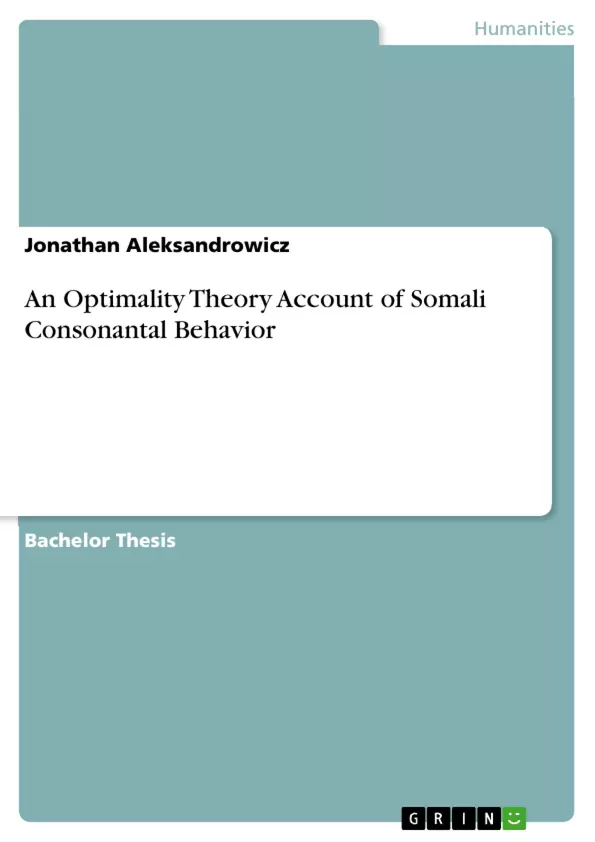A short study on the consonantal behavior in Somali using Optimality Theory. The goal was to use data from Somali speakers in order to create an account of the constraint rankings used in OT, some traditional and some ad-hoc.
Inhaltsverzeichnis (Table of Contents)
- 1. Introduction and Background Information
- 2. Epenthesis vs. Deletion
- 3. Somali Geminates and the Process of Degemination
- 4. Intervocalic Spirantization of Unaspirated Stops
Zielsetzung und Themenschwerpunkte (Objectives and Key Themes)
This paper explores the behavior of consonants in Somali within different environments, analyzing the interactions between these behaviors. The primary focus is on the occurrences of spirantization, degemination, coalescence, and delabialization, providing an Optimality Theory-based explanation for these phenomena. The analysis aims to demonstrate how Somali phonology adheres to a CVC syllable template and how this impacts the behavior of consonants.
- The role of epenthesis and deletion in maintaining the CVC syllable template
- The process of degemination in Somali, specifically with regard to geminate sonorants and stops
- The occurrence of spirantization in intervocalic environments
- The application of Optimality Theory to account for these phonological phenomena in Somali
Zusammenfassung der Kapitel (Chapter Summaries)
- Chapter 1 introduces Somali as an Afro-Asiatic language with a rich consonantal inventory. It highlights the significance of understanding the interactions between different consonant behaviors within the language.
- Chapter 2 delves into the preference for epenthesis over deletion in Somali, demonstrating how epenthesis helps maintain the CVC syllable template. Examples of epenthesis are provided, and the relevant Optimality Theory constraints, MAX and DEP, are introduced.
- Chapter 3 examines the occurrence of geminates in Somali, focusing specifically on sonorants. It discusses the process of degemination and its role in reducing geminate consonants, particularly in intervocalic environments. The ad hoc constraint NOGEM is introduced to account for the absence of geminate consonants in surface forms.
Schlüsselwörter (Keywords)
This study focuses on Optimality Theory, Somali phonology, consonant behavior, spirantization, degemination, epenthesis, deletion, CVC syllable template, faithfulness constraints, LENITION, IDENT[CONT], NOGEM, and phonotactic constraints.
- Quote paper
- Jonathan Aleksandrowicz (Author), 2018, An Optimality Theory Account of Somali Consonantal Behavior, Munich, GRIN Verlag, https://www.grin.com/document/1244872



